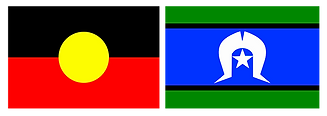
Country
Eight Ways of Learning
The eight ways methodology aims to work in the middle ground between different Aboriginal nations, but also in the middle ground between Aboriginal and western learning systems (Yunkaporta, 2009).
The descriptions below are all taken from Yunkaporta (2009). See references page for the full reference.

Story sharing - the boomerang represents a story's beginning, middle (the elbow or climax point) and end. Personal stories allow everyone to connect new learning to their home culture. Grammar and vocabulary are built through stories and in context and not in isolated activities.

Learning maps - the path represents a journey; they never take a straight path. Points of understanding occur along the way and not just at the end. Learning maps show students where their learning is going so they can see how what they are doing fits into the larger picture.

Non-verbal learning - the symbol represents knowledge that is learned without words (including kinaesthetic learning, gesture, inference etc.). The whole body should be used to communicate meaning (gesture, movement, mime etc.). Observation is also a form of non-verbal learning.

Symbols and Images - the symbol represents people sitting at a meeting place yarning. An Aboriginal student might have a picture of their mother above the English word mother rather than the Aboriginal word for mother as this connects to their own experience. Story Maps are an example of using images to retell a story.

Land links - the symbols is a river. Land and place is central to Aboriginal ways of knowing and should be central to storytelling. Care should be taken to find out what land Dreaming stories are from so that they can be connected to Country and Place.

Non-linear processes - the circle in the middle of the symbol represents circular logic and the lines represent opposites. Opposites meet to create something new. Symmetry and balance are valued above oppositional thinking. Learning involves bringing in knowledge which may seem off topic. Higher knowledge tends to find agreement between Aboriginal and Western ideas. This is about allowing students to approach a topic in a unique way. This could involve using humour or song or an unusual analogy.

Deconstruct / Reconstruct - the symbol is a Torres Strait Islander drum. It represents scaffolding, or a balance between independent and supported learning. Using this pedagogy, a group of students might start with a whole text, then explore its context and purpose, then the structure of it (they unpack it). Students are then able to apply what they've learned and create their own texts and yarns.

Community links - the symbol is Brad Steadman's knowledge spiral from Brewarrina. For everything that is taught, students need to be able to see how it relates to them and their community. The knowledge is then returned to the community, often through plays and performances. This gives students' work a purpose.
